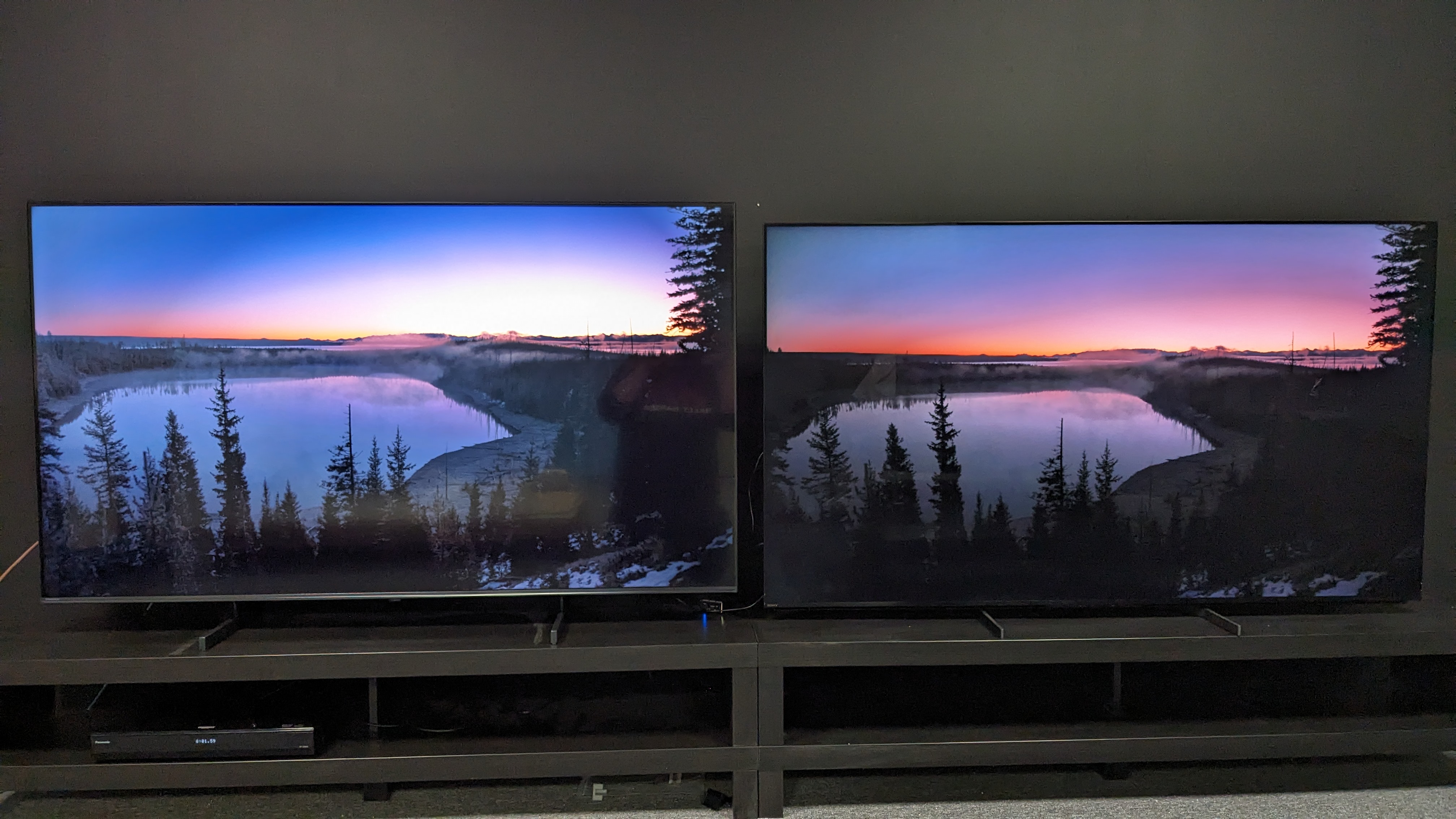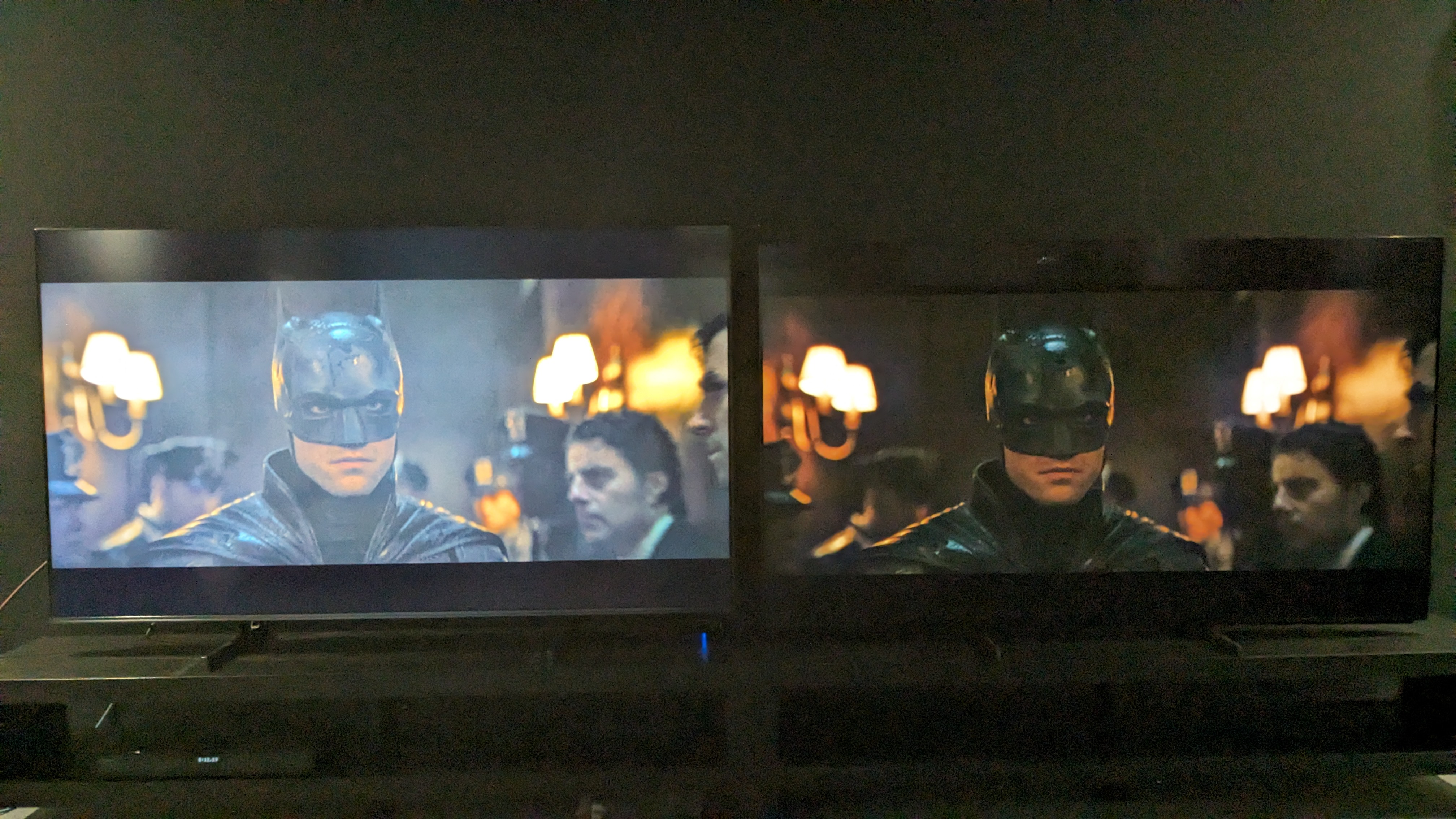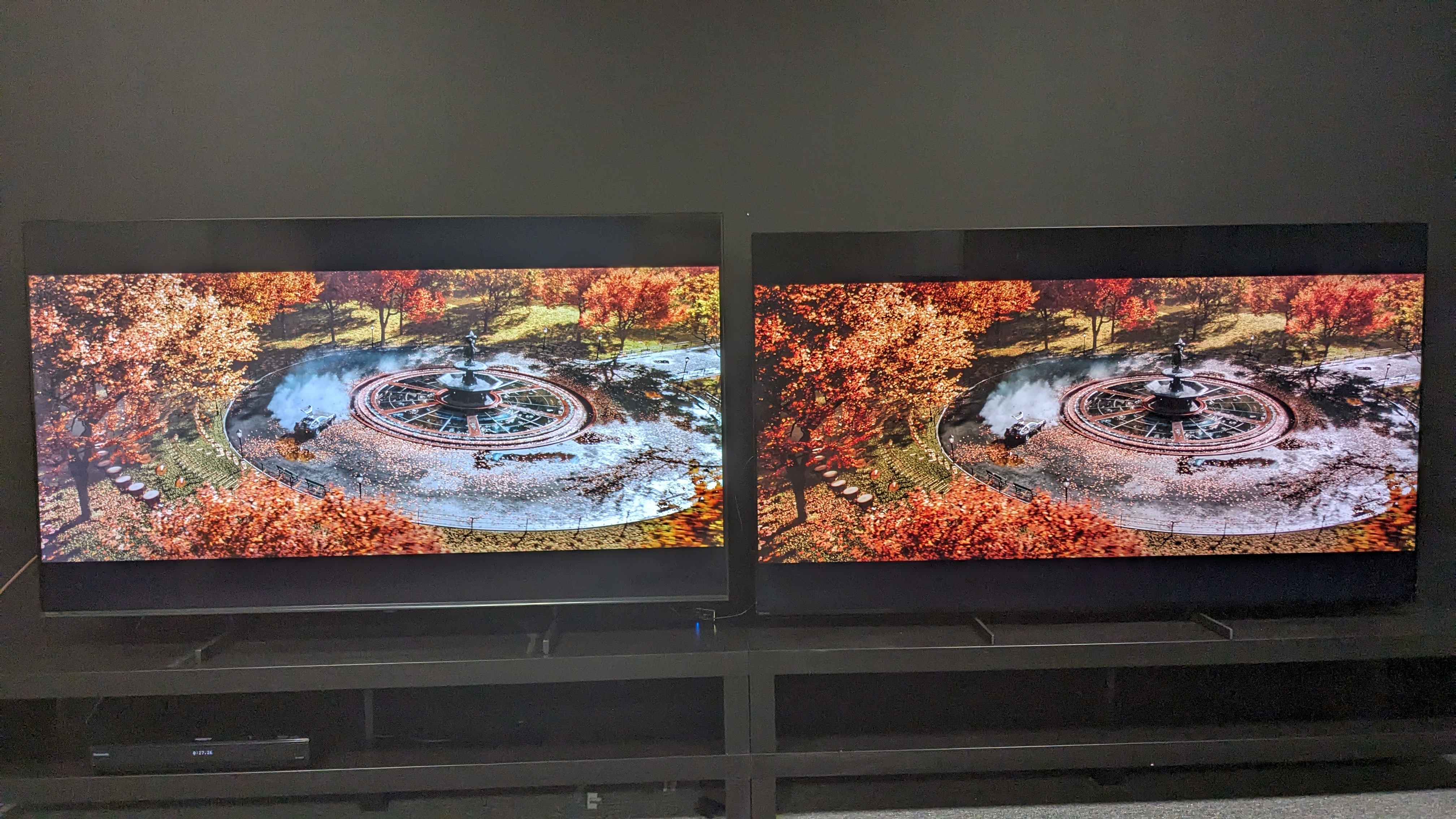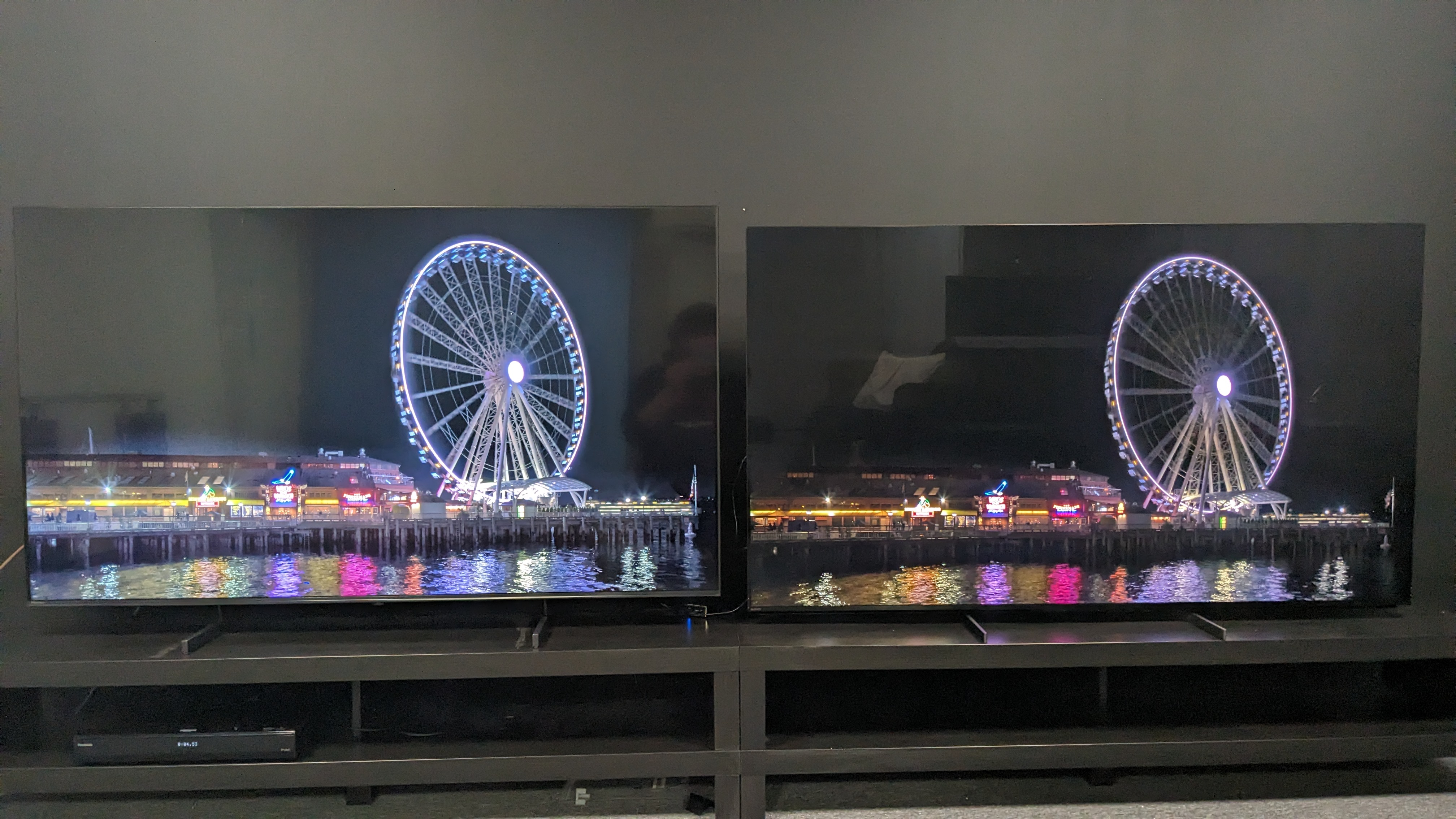I tested a premium and budget mini-LED 4K TV side-by-side – here are the real-world differences

Mini-LED backlight tech is found in some of the best TVs and has seen a popularity spike in 2024. Alongside the usual proprietors of the best mini-LED TVs such as Hisense, TCL, Samsung and Sony, other brands have started to incorporate the backlight tech in their TVs including LG and Panasonic.
Panasonic introduced the W95A as part of its 2024 lineup and it leads as the brand’s flagship non-OLED 4K TV. LG’s QNED series has been around for a while, but it took a front and center place when I saw LG’s 2024 TV lineup in person, and the LG QNED91T ended up in my top three most anticipated LG TVs of 2024 list (although when I reviewed it sadly didn’t quite live up to expectations).
Probably one of the biggest TV surprises of 2024 was Sony’s decision to ditch OLED for its flagship 2024 4K TV and opt for mini-LED. The thinking behind the decision was that mini-LED tech, especially Sony’s new iteration in the Bravia 9, which uses a new microscopic 22-bit mini-LED driver and its XR Backlight Master Drive processing, will be able to accurately display the brightness of movies mastered using Sony’s new mastering monitor, the BVM-HX3110. This monitor can hit a peak brightness of 4,000 nits – a number we’ve yet to see the best OLED TVs come anywhere near. And from what we’ve seen of Sony’s latest backlight tech, it’s impressive.
With all this in mind, I thought I’d look at mini-LED TVs more closely. With a bit of good timing and luck, I had two mini-LED sets varying in price available: the Hisense U6N, its entry-level model, and the Sony X95L, its flagship from 2023 and the predecessor of the Bravia 9. I’d tested the X95L and seen how it pays to pay more, but it was interesting to compare it to a budget mini-LED alternative.
It’s worth noting that there is an odd caveat with both these sets. The 65-inch Hisense U6N retails for $799 / £1,299 / AU$1,399, so in the US and Australia, it’s a pretty good value but pricier in the UK for what you’re getting. The Sony X95L retails for £1,699 and its closest counterpart in the US, the X93L, retails for $1,699. But, even with this, we’re looking at the two ends of the mini-LED price and performance spectrum.
Everything’s under control

My idea for the test was to look at these TVs as they would be used in the real world for everyday viewing. That meant selecting the best picture preset for each, in their default settings, and playing the same source on both. For these tests, the Hisense U6N was in Standard mode and the Sony X95L was in Cinema/Movie mode (more on why in a bit).
The first port of call was to test darker images, as mini-LEDs due to their increased brightness and reliance on backlight dimming often can’t achieve the same black depth as OLED TVs. I chose the 4K Blu-ray of The Batman – a disc I often use for testing black levels and shadow detail – played on a Panasonic DP-UB820 4K Blu-ray player.
Sign up for breaking news, reviews, opinion, top tech deals, and more.
It was immediately apparent just how good the X95L’s backlight control was. Blacks looked accurate, perfectly capturing the gloomy tone of the movie. It also demonstrated brilliant contrast, particularly in a scene where Batman and Jim Gordon walk up a hallway lit only with small lamps. The X95L struck a perfect balance between the bright lights and dark hallway, cop uniforms, and Batman’s suit. The U6N in Standard mode struggled, delivering a much brighter image that washed out the black to a gray tone. However, Standard looked better than the U6N’s Movie and Filmmaker Modes.
Viewed in dim and dark conditions, the X95L thrived. Even in brighter conditions, the X95L had the upper hand, though the U6N did a better job handling reflections. Still, it was hard to look past how much more effective the X95L was in displaying darker pictures.
Levelling the playing field

While the U6N struggled with blacks and shadows, it held its own when it came to colors and brighter images. That’s not to say it looked better than the X95L, which demonstrated how contrast adds extra depth and detail to the picture, but the U6N still showed its worth.
Watching Ready Player One, a movie based in a virtual reality game world that blends real-world sequences with crisp, detailed and colorful CGI, the U6N did a good job displaying the punchy colors. The main character’s game avatar, Parzival, has striking blue eyes and the U6N displayed this with clarity and accuracy. The same was true of the autumnal oranges, yellows and browns of the trees in a park after an intense race, and the bright green of fireworks before it.
The X95L maintained the best detail and gave the colors more depth, though its Cinema mode favored a warmer color palette. That meant the U6N actually better suited Ready Player One. Even when switching to the X95L’s Standard picture mode, it still looked warmer than the U6N, so the cooler, blue colors of Ready Player One again shone on the U6N in Standard mode.
I also used demonstration footage from the Spears & Munsil UHD Benchmark 4K Blu-ray, including daytime landscape shots for color, dusk and night shots for contrast, and close-up shots of objects such as pocket watches and animals to test for black levels and detail.
This again proved what I’d seen already – the X95L’s more sophisticated processing and higher dimming zone count let it thrive in every aspect with true-to-life and realistic images. The U6N with its budget backlight system, in contrast, mostly managed punchy detail and colors.
Final thoughts

The Sony X95L is the superior TV in this comparison. It displayed pictures with greater accuracy and didn’t really falter in any area. The U6N struggled with contrast and black levels, though it handled colors and brighter images well enough.
You clearly get more when you pay more when it comes to mini-LED TVs, but it’s essential not to overlook price. In the US, the Hisense U6N and Sony X93L (the X95L’s closest equivalent) have a price difference of around $1,000. That's a huge amount to consider as it could easily cover a sound upgrade from one of the best soundbars. Even in the UK, there is a £400 price difference between the U6N and X95L, and that’s after the X95L has had time for price reductions, which the U6N is sure to get in the future.
As a bonus, my comparison also demonstrated that budget mini-LED TVs are getting more sophisticated. There were moments where I genuinely found my eye more drawn to the U6N during Ready Player One and although the X95L is the superior TV, the U6N will suit many people just fine.
You might also like...

James is the TV Hardware Staff Writer at TechRadar. Before joining the team, he worked at a major UK based AV retailer selling TV and audio equipment, where he was either telling customers the difference between OLED and QLED or being wowed by watching a PS5 run on the LG 65G2. When not writing about the latest TV tech, James can be found gaming, reading, watching rugby or coming up with another idea for a novel.